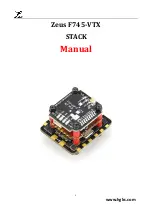
SRS Sensors
3
THEORY
phy and ceptometer techniques), the measurement of NDVI becomes
less and less sensitive as LAI increases above a certain point (Figure
4). Nguy-Robinson et al. (2012) suggest changes in LAI are difficult
to detect when LAI is much greater than 3 m
2
m
−
2
. This should
not be surprising considering the spectral measurement being made.
NDVI measurements rely on reflected light from leaf surfaces. As
the canopy fills and upper leaves begin to cover lower leaves, the leaf
area will continue to increase without making a further contribution
to reflected radiation. Furthermore, foliar chlorophyll is a very effi-
cient absorber of radiation in red wavelengths so that reflectance from
leaves is typically very low in the red region ( Figure 3). Therefore,
increasing LAI, and thus canopy chlorophyll content, does not sub-
stantially change red reflectance beyond a certain point. For these
reasons NDVI has limited predictive ability in canopies with high
LAI. For some applications, however, NDVI saturation at high LAI
may not be as important as it would appear.
Although NDVI may have limited sensitivity when LAI is high,
shaded leaves tend to have much less impact on light capture com-
pared to sunlit leaves, and therefore contribute proportionally less to
canopy productivity. As a general modeling parameter, an estimate
of sunlit leaves may be adequate for estimating photosynthesis and
biomass accumulation (i.e., carbon uptake) for some applications.
Monteith (1977) proposed the now well-known relationship between
biomass accumulation and radiation capture seen in equation 2.
A
n
, canopy
=
f
s
S
t
(2)
In equation 2,
A
n,canopy
is the biomass accumulation or carbon assim-
ilation and
is a conversion efficiency often referred to as light use ef-
ficiency (LUE). The LUE depends on a variety of factors such as pho-
tosynthetic acclimation, physiological stress level, and plant species.
f
s
is the fractional interception of radiation by the canopy, and
S
t
is the total incident radiation. The relationship between NDVI and
LAI in Nguy-Robinson et al. (2012) and the relation between frac-
tional interception and LAI (Campbell and Norman, 1998) show that
NDVI and fractional interception are approximately linearly related
(Figure 5). Even when LAI is high, NDVI can provide a good es-
timate of the fractional interception by green leaves in a canopy; a
value that is critical for carbon assimilation models.
9














































